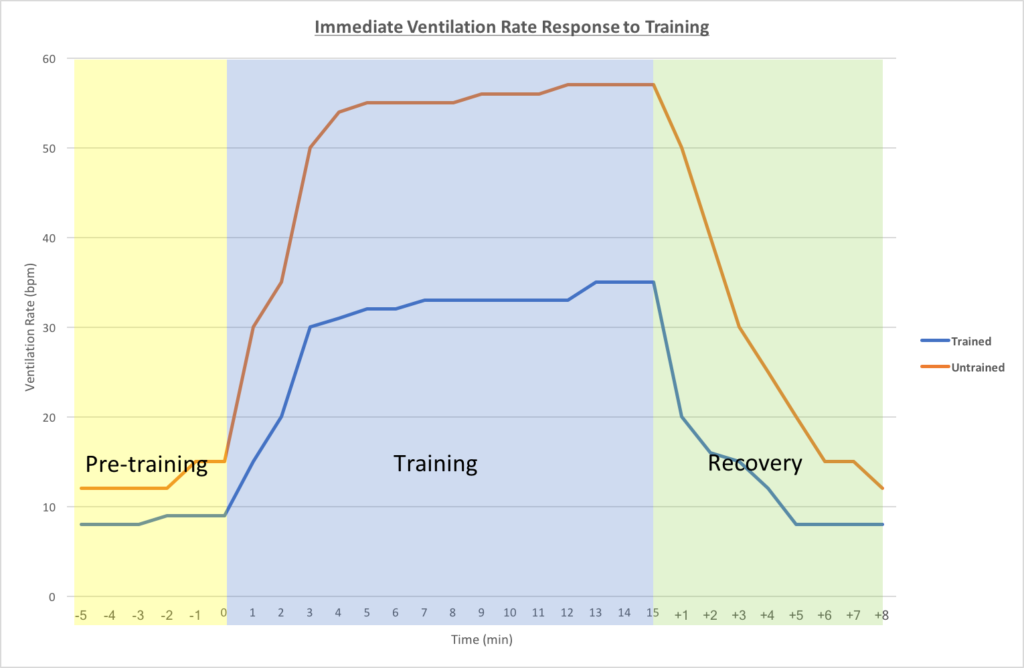Ventilation rate is a measure of how many breaths a person takes per minute, and is also known as the respiratory rate. As with the heart rate, an athlete’s ventilation rate will have an immediate increase in response to training. This is for the same reason that there is an increase in HR, the body is responding to the increasing concentration of carbon dioxide in the blood. In order to remove the carbon dioxide, your body has to breathe it out. By increasing your respiratory rate your body increases the amount of carbon dioxide removed, while at the same time increasing the amount of oxygen inspired.
The size of the increase in ventilation rate is directly connected to the intensity of the training, so that the more intense the training the higher the ventilation rate. For example, the athlete who was training at 85% MHR will have a higher ventilation rate than when they are training at 65% MHR. This is because there is less demand for oxygen and a smaller amount of carbon dioxide being produced.

Similar to the changes in HR, the ventilation rate (VR) increases slightly just before training in anticipation of movement. The athlete’s VR then increases according to the intensity, with the untrained athlete requiring higher VRs than the trained athlete. After training, the trained athlete returns to normal faster than the untrained.
If there is a change in the intensity the athlete will have a change in ventilation rate. This means the athlete who was jogging at 60% will have an increase in ventilation rate when they complete a 60m sprint at 100%. This change in rate comes in response to the increased demand for oxygen delivery and carbon dioxide removal.
After training an athlete’s ventilation rate will return to normal levels as the demands for oxygen delivery and carbon dioxide removal decrease.

